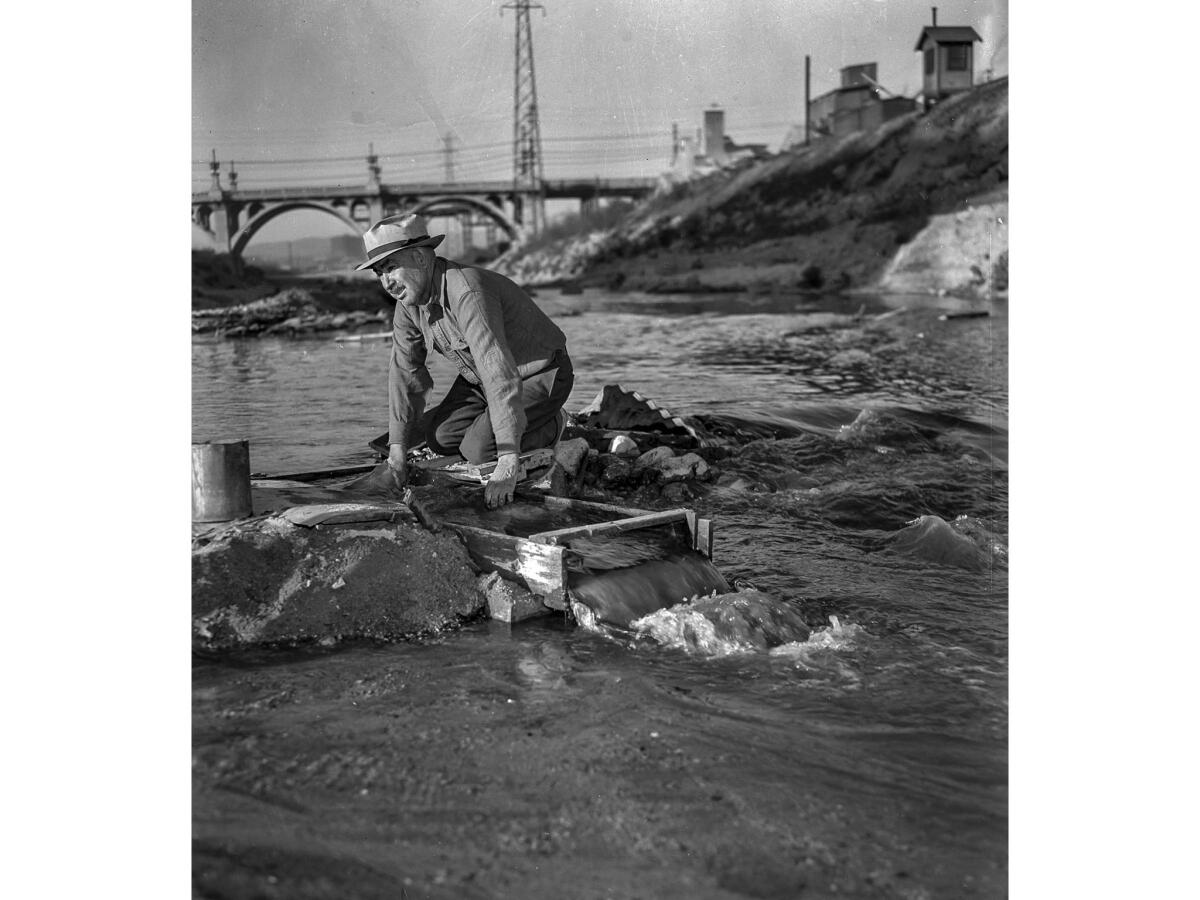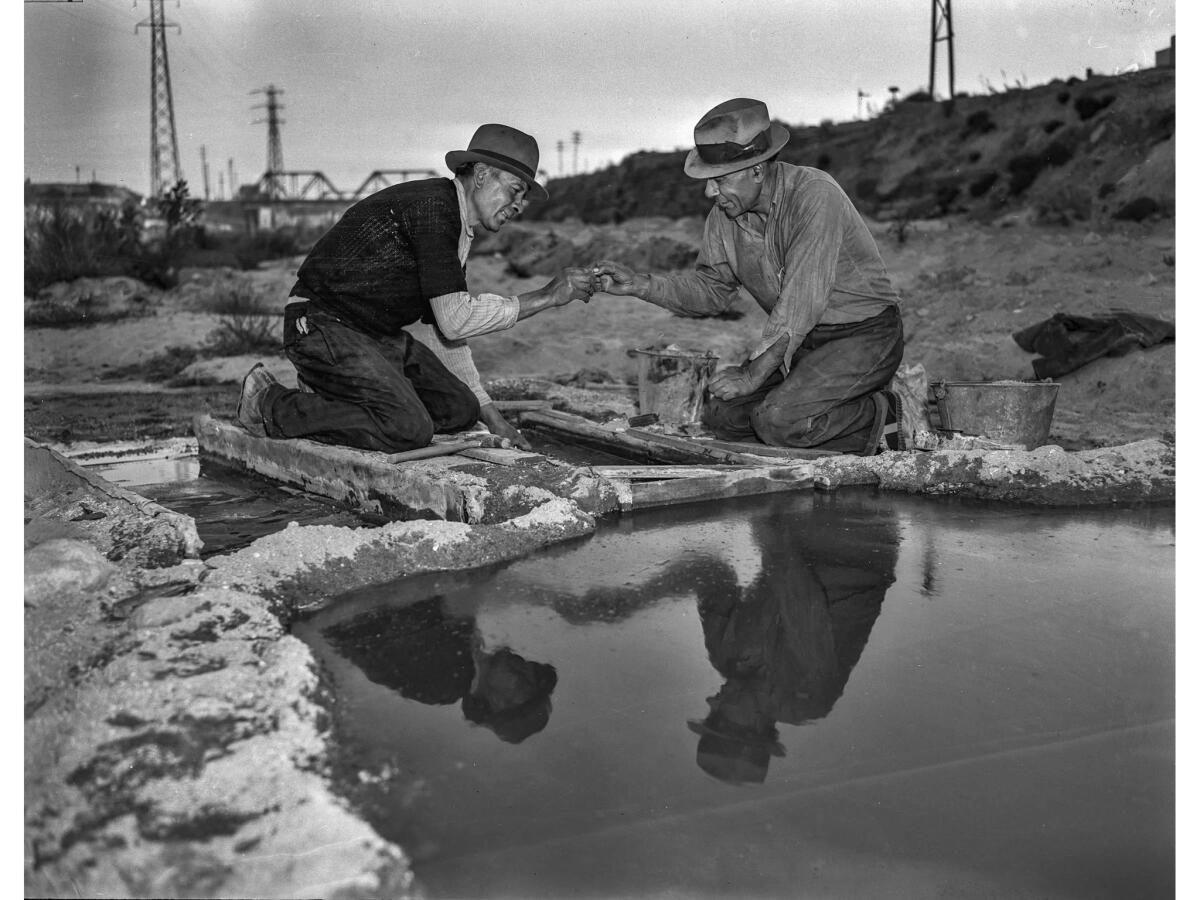From the Archives: There’s gold in the Los Angeles River
- Share via
In 1938, gold prospectors worked the Los Angeles River. In later years, the river received its concrete coat — stopping the prospecting.
Writer Don Ashbaugh reported in the Dec. 12, 1938, Los Angeles Times:
Yes, sir, plenty of gold — also silver, copper, brass, lead and iron — within two miles of City Hall by airline.
And laughing at relief project workers, there are a couple of score of hard-working men down there with shovels, screens and sluice boxes making themselves a comfortable living by mining the sands of that much-maligned little stream.
Some of them are supporting large families with their work.
Take Guy Ritter, as an instance. Ritter is a sandy-haired, blue-eyed fellow in middle age. He grew up on a cattle ranch in Eastern Oregon.
He’s the discoverer of the Los Angeles River bed gold claims.
“My old man told me when I left home that I was on my own — that if I ever took charity I’d be a disgrace to the family and he’d disown me.
“I came down to Hollywood to show some of those movie cowboys how a real cowboy should act. I didn’t get anywhere. When I was broke I remembered dad’s words.
“I saw all this sand and decided there must be something in it. I made a screen and sluice box, got a shovel and started to work. That was three years ago. I’ve been my own boss since.
“I’ve averaged more than $1 a day — some days I’ve had good luck and taken more that $12 worth of metal out of my sluice.
“I have my own apartment. I can always pay the rent. I wear good clothes and Mister, I’ve always got money in my pocket.
“I work seven days a week down here and I stay until after dark so I can hide my day’s diggings — there’s always a lot of tramps and hijackers sitting around in the bushes trying to see where we hide our metal so they can steal it.
“I’d rather dig here, on my own, then work on a W.P.A. project — that looks like charity to me.”...

The mining operations are hidden from automobile traffic — they are in that stretch of the river between Ninth St. and Soto Ave., where the stream makes a bend.
Ritter doesn’t bother with iron pieces he finds in his digits but a lot of the other men do. The iron is composed of nails, pieces of wire and other things which have floated down the river during floods and become imbedded in the sands. It brings only 35 cents a hundredweight.
But brass, copper and lead — especially the latter — is prized stuff — it’s worth from 3 to 5 cents a pound depending on the market and a mighty lot of it is caught in the sluice boxes.
Ritter had a receipt for two days’ collection of lead which he had just sold for $2.76. Of course, gold is the real prize – and they all get quite a bit of it. …
Following the deadly floods in March 1938, the Los Angeles River was encased in concrete.
